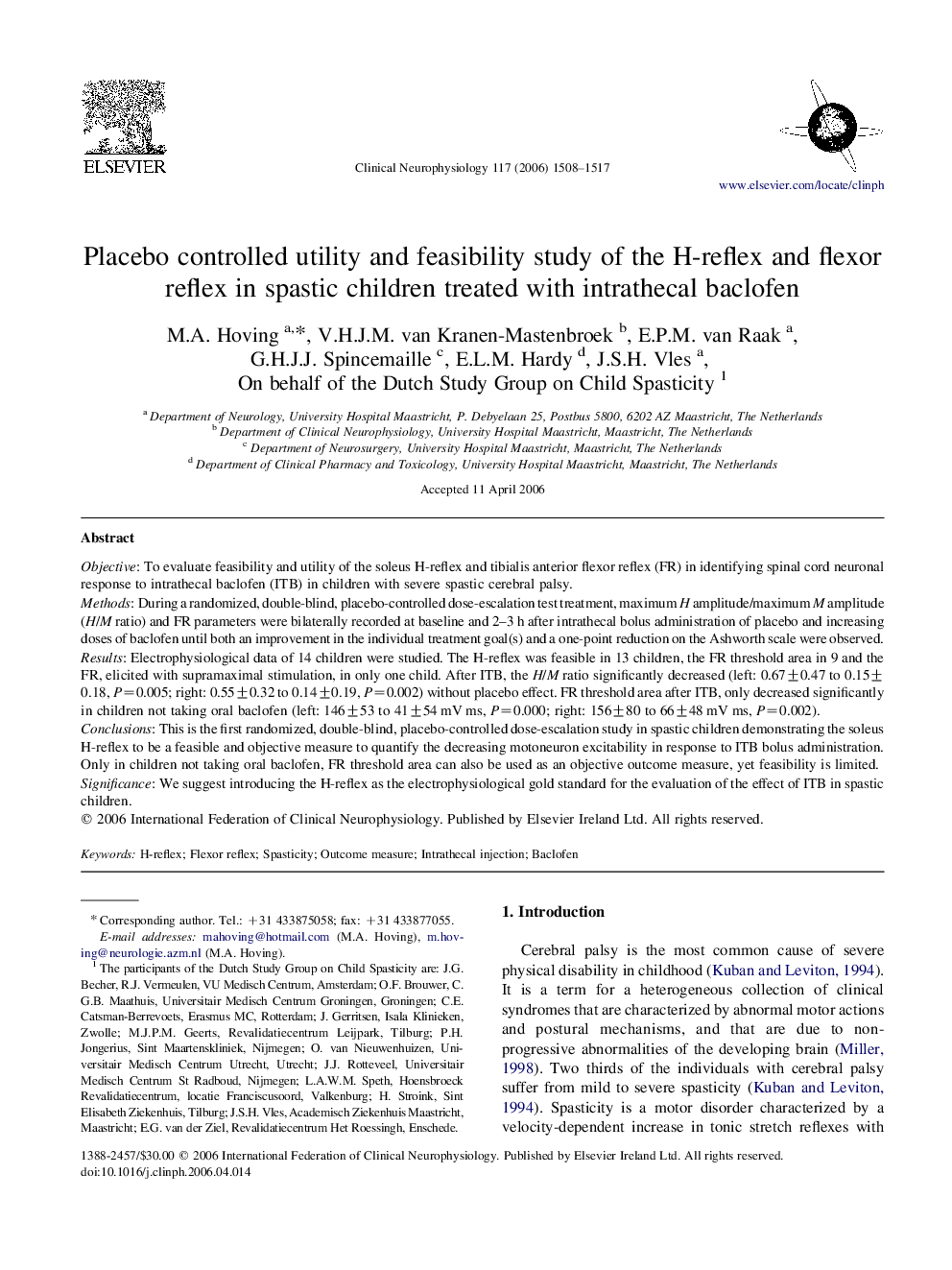| Article ID | Journal | Published Year | Pages | File Type |
|---|---|---|---|---|
| 3048106 | Clinical Neurophysiology | 2006 | 10 Pages |
ObjectiveTo evaluate feasibility and utility of the soleus H-reflex and tibialis anterior flexor reflex (FR) in identifying spinal cord neuronal response to intrathecal baclofen (ITB) in children with severe spastic cerebral palsy.MethodsDuring a randomized, double-blind, placebo-controlled dose-escalation test treatment, maximum H amplitude/maximum M amplitude (H/M ratio) and FR parameters were bilaterally recorded at baseline and 2–3 h after intrathecal bolus administration of placebo and increasing doses of baclofen until both an improvement in the individual treatment goal(s) and a one-point reduction on the Ashworth scale were observed.ResultsElectrophysiological data of 14 children were studied. The H-reflex was feasible in 13 children, the FR threshold area in 9 and the FR, elicited with supramaximal stimulation, in only one child. After ITB, the H/M ratio significantly decreased (left: 0.67±0.47 to 0.15±0.18, P=0.005; right: 0.55±0.32 to 0.14±0.19, P=0.002) without placebo effect. FR threshold area after ITB, only decreased significantly in children not taking oral baclofen (left: 146±53 to 41±54 mV ms, P=0.000; right: 156±80 to 66±48 mV ms, P=0.002).ConclusionsThis is the first randomized, double-blind, placebo-controlled dose-escalation study in spastic children demonstrating the soleus H-reflex to be a feasible and objective measure to quantify the decreasing motoneuron excitability in response to ITB bolus administration. Only in children not taking oral baclofen, FR threshold area can also be used as an objective outcome measure, yet feasibility is limited.SignificanceWe suggest introducing the H-reflex as the electrophysiological gold standard for the evaluation of the effect of ITB in spastic children.
